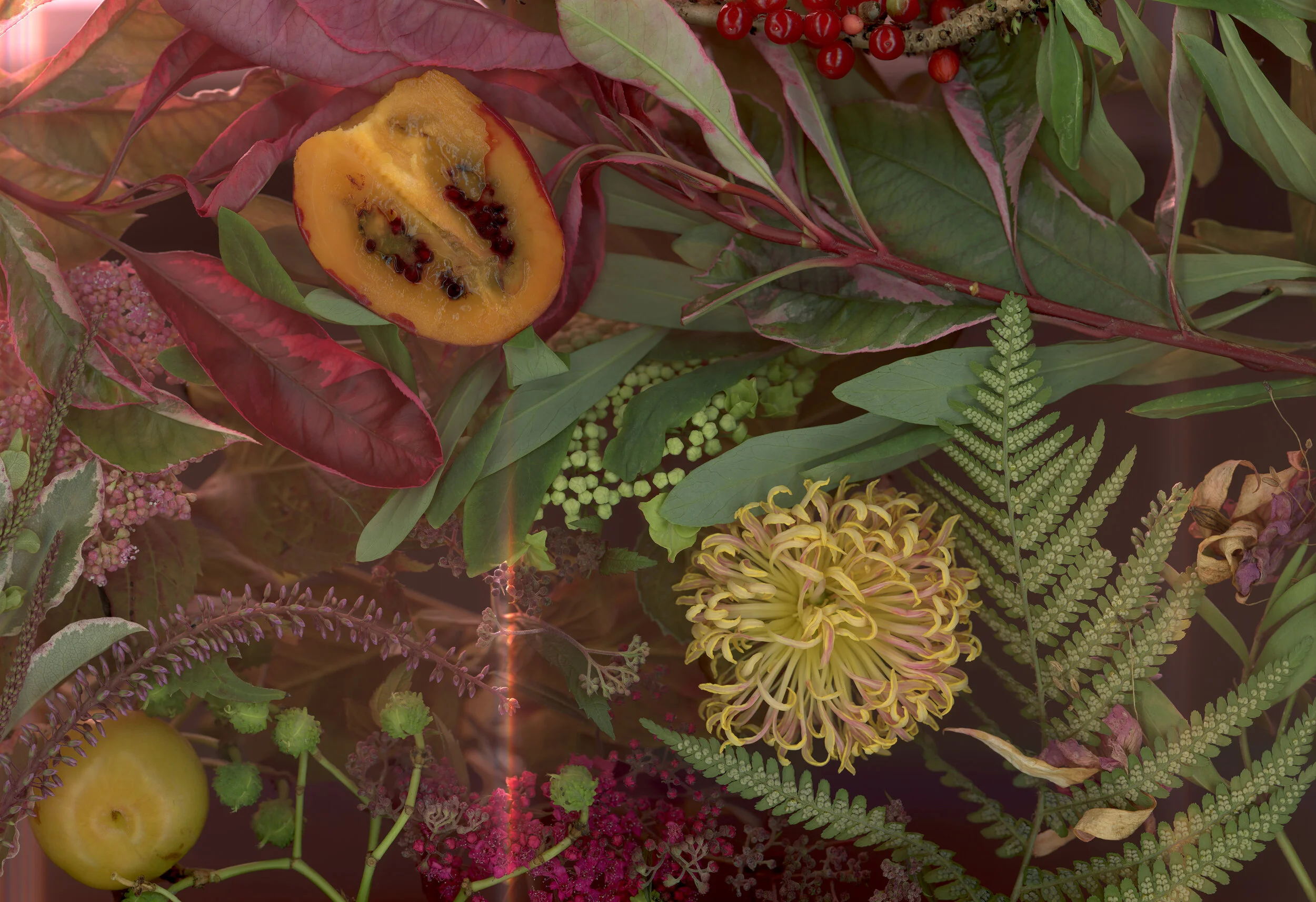The Genesis of Blame - A Natural History Of The Forbidden Fruit
‘Phoenix Dactylifera’ - The Genesis of Blame - A Natural History Of The Forbidden Fruit, 2019
Pitaya’ - The Genesis of Blame: A Natural History of Forbidden Fruit, 2019
‘Annona’ - The Genesis of Blame: A Natural History of Forbidden Fruit, 2019
The story of Adam and Eve in the garden is one of the best-known narratives in the Western world, as well as one of the most frequently misquoted, misremembered and mistranslated. The story is rich, replete with symbolism, symmetry, sex, contradiction – as rich as the garden gifted to the first human beings. Ripe as a nearly-fallen fruit, the tale is attended by sociocultural impositions and assumptions, apocrypha and additions.
One of these additions, the Zohar – part of the Jewish Kabbalah – tells of Lilith, a hot and fiery female spirit, who lived with Adam in the Garden before God blew the breath of human life into him. Lilith was the original woman, an essential femininity shared between herself and Adam until Eve was pulled from the latter’s rib. Frightened at the division of the man’s body and the sexual opposition of the two people, Lilith fled, and her feminine power was lost to human beings.
As Anne Enright indicates in her illuminating 2018 essay ‘The Genesis of Blame’, the story of Genesis is a narrative of division and separation: light from dark; the waters above from the waters below; the earth from the sea; the domesticated animals from the wild; man from woman. It is a story of naming; Adam is given the task of taxonomy. But it is also a narrative of coming-together, of joinings, multiplicities and contradictory doublings: flesh from flesh; ashes to ashes; prelapsarian sex. The tree of life is rooted near the tree of the knowledge of good and evil, and the difference between them is never explained. In the King James Version of Genesis, we are told that a man shall ‘cleave’ unto his wife; that strange word simultaneously meaning to split and to join. This is a narrative of cleaving: separating and rejoining.
Anna Skladmann’s series The Genesis of Blame: A Natural History of Forbidden Fruit explores the multiplicities of these cloven narratives. Using her innovative scanning method (reminiscent of the techniques used by early photography pioneers), Skladmann captures leaves, flowers and tropical fruits. Each fruit offers an alternative to the familiar forbidden apple, hinting at the limits of taxonomy in a constantly evolving world. Although all the fruits are edible, many of the other plants in the images are not; the images are simultaneously seductive and poisonous in appearance, suggesting contradictory responses to desire.
In our inherited reception of the Genesis story, tiny differences of anatomy are vastly magnified. Adam’s insistent separation from Eve (through the blame he places on her for their joint transgression) is a highly relatable example of the human desire to augment and catalogue the differences between ourselves and others – and to use those differences for oppression, as well as for the suppression of the parts of ourselves we deem unhelpful or transgressive. We blame others, we wash our hands of responsibility towards the rest of the world. In an age of environmental crisis, this tendency is more problematic than ever. Drawing on ecofeminist criticism and the philosophy of Luce Irigaray, The Genesis of Blamequestions whether we can look beyond the taxonomy of separation; and whether, taking Lilith as a guide, we can reclaim Edenic dust and find ourselves simultaneously united and multiplicitous. - Anna Souter, 2019
‘Diospyros Kaki’ - The Genesis of Blame: A Natural History of Forbidden Fruit, 2019
‘Cucumis Metuliferus’, The Genesis of Blame: A Natural History of Forbidden Fruit, 2019
‘Piel de Sapo’ - The Genesis of Blame: A Natural History of Forbidden Fruit, 2019





